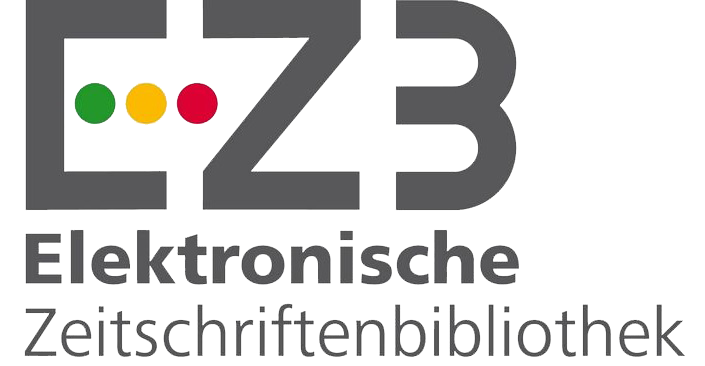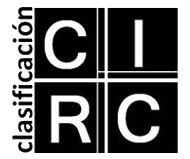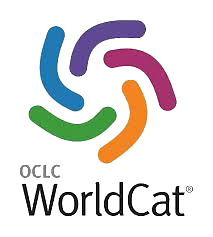«He better answer me!»
The appropriation of mobile telephony from the perspective of mothers and fathers
DOI:
https://doi.org/10.24215/16696581e260Keywords:
Appropriation of mobile telephony, Daily life, Family, ParentalityAbstract
Mobile telephony is the most widespread technology among information and communication technologies (ICT). Unlike others (and especially the Internet), the mobile phone is primarily used to strengthen pre-existing ties, especially those of peer and family groups.
In this paper we used a qualitative approach, based on in-depth interviews and discussion groups, to investigate the processes of appropriation of mobile telephony in the domestic sphere, and their articulation with family relationships between, by on the one hand, mothers and fathers and, on the other, their daughters and sons. Findings indicate that mobile phones have become a supportive infrastructure for family life, especially when daughters and sons move outside the home. Beyond the incorporation of microcoordination, perpetual contact at the phathic level allows to calm the anguish inherent in the contemporary increase in risk.
This explains why mobile phones have become, within families, a preferential object of disputes, negotiations and control, becoming a central aspect of contemporary parentality.
Downloads
References
Bateson, G. (1991). Pasos hacia una ecología de la mente. Buenos Aires: Planeta; Carlos Lohlé.
Bayer, J. B., Campbell, S. W., & Ling, R. (2016). Connection Cues: Activating the Norms and Habits of Social Connectedness: Connection Cues. Communication Theory, 26(2), 128-149. https://doi.org/10.1111/comt.12090
Beck, U. (2010). La sociedad del riesgo: Hacia una nueva modernidad. Barcelona: Paidós.
Capano, Á., & Ubach, A. (2013). Estilos parentales, parentalidad positiva y formación de padres. Ciencias Psicológicas, 7(1), 83-95.
Caron, A. H., & Caronia, L. (2007). Moving Cultures: Mobile Communication in Everyday Life. Montreal: McGill-Queen’s Press.
Castells, M., Ardèvol, M. F., Qiu, J. L., & Sey, A. (2007). Comunicación móvil y sociedad: Una perspectiva global. Ariel.
Cui, D. (2015). Beyond «connected presence»: Multimedia mobile instant messaging in close relationship management. Mobile Media & Communication Mobile Media & Communication.
Duek, C., & Benítez Largui, S. (2018). Infancias y tecnologías en Argentina: Interacciones y vínculos intergeneracionales. Nómadas, (49), 121-135. https://doi.org/10.30578/nomadas.n49a7
Elias, N. (1989). Sobre el tiempo. Recuperado de https://www.overdrive.com/search?q=7B1460A2-AB4D-42CA-87BE-502238D47AA5
Fortunati, L., & Magnanelli, A. M. (2002). El teléfono móvil de los jóvenes. Estudios de Juventud, (57), 59-78.
Giddens, A. (1994). Modernidad e identidad del yo: El yo y la sociedad en la época contemporánea. Barcelona: Península.
Gordon, E., & de Souza e Silva, A. (2012). The urban dynamic of Net localities: How mobile and locationes-aware technologies area transforming places. En R. Wilken & G. Goggin (Eds.), Mobile technology and place (pp. 88-103). New York; Oxfordshire: Routledge.
GSM Association. (2019). The Mobile Economy 2019. Recuperado de https://www.gsmaintelligence.com/research/?file=b9a6e6202ee1d5f787cfebb95d3639c5&download
Haddon, L. (2013, enero). Mobile media and children. Mobile Media & Communication, 1, 89-95.
Haddon, L., & Green, N. (2009). Mobile communications an introduction to new media. Oxford; New York: Berg.
Hernández Sampieri, R., Fernández Collado, C., & Baptista Lucio, P. (1991). Metodología de la investigación. México: McGraw-Hill.
Höflich, J., & Schlote, I. (2009). Lugares de vida, lugares de comunicación: Observaciones sobre el uso del teléfono móvil en lugares públicos. En J. M. Aguado & I. J. Martínez (Eds.), Sociedad móvil: Tecnología, identidad y cultura. Madrid: Biblioteca Nueva.
Katz, J. E. (2006). Machines That Become Us: The Social Context of Personal Communication Technology. Transaction Publishers.
Katz, J. E. (2009). Cuestiones teóricas en torno a medios móviles y comunicación. En J. M. Aguado & I. J. Martínez (Eds.), Sociedad móvil: Tecnología, identidad y cultura (pp. 21-35). Madrid: Biblioteca Nueva.
Latour, B. (2012). Cogitamus: Seis cartas sobre las humanidades científicas. Buenos Aires: Paidós.
Licoppe, C. (2004). ‘Connected’ Presence: The Emergence of a New Repertoire for Managing Social Relationships in a Changing Communication Technoscape. Environment and Planning D: Society and Space, 22(1), 135-156. https://doi.org/10.1068/d323t
Ling, R. (2008). The mediation of ritual Interaction via the Mobile Telephone. En J. E. Katz (Ed.), Handbook of mobile communication studies. Recuperado de http://search.ebscohost.com/login.aspx?direct=true&scope=site&db=nlebk&db=nlabk&AN=228453
Ling, R. (2012). Taken for Grantedness: The Embedding of Mobile Communication into Society. MIT Press.
Mascheroni, G., & Vincent, J. (2016). Perpetual contact as a communicative affordance: Opportunities, constraints, and emotions. Mobile Media & Communication, 4(3), 310-326. https://doi.org/10.1177/2050157916639347
Morley, D. (2009). Medios, modernidad y tecnología: Hacia una teoría interdisciplinaria de la cultura. Barcelona: Gedisa.
Morley, D. (2017). Communications and mobility: The migrant, the mobile phone, and the container box.
Pons Díez, J., & Berjano Peirats, E. (1997). Análisis de los estilos parentales de socialización asociados al abuso de alcohol en adolescentes. Psicothema, 9(3), 609-617.
Thompson, J. B. (2001). El escándalo político: Poder y visibilidad en la era de los medios de comunicación. Barcelona; Buenos Aires: Paidós.
Thompson, K. (2014). Pánicos morales. Bernal: Universidad Nacional de Quilmes.
Turkle, S. (2011). Alone Together: Why We Expect More from Technology and Less from Each Other.
Vivas, G. P. M., & Torres, F. C. (2011). Internet y pánico moral: Revisión de la investigación sobre la interacción de niños y jóvenes con los nuevos medios. Universitas Psychologica, 10(3), 855-865.
Willett, R. J. (2015). The discursive construction of ‘good parenting’ and digital media – the case of children’s virtual world games. Media, Culture & Society, 37(7), 1060-1075. https://doi.org/10.1177/0163443715591666
Wimmer, R. D., & Dominick, J. R. (1996). La investigación científica de los medios de comunicación: Una introducción a sus métodos. Barcelona: Bosch.
Winocur, R. (2009). Robinson Crusoe ya tiene celular: La conexión como espacio de control de la incertidumbre. México, D.F.: Universidad Autónoma Metropolitana, Unidad Iztapalapa : Siglo Veintiuno.
Yu, Q., Huang, P., & Liu, L. (2017). From “connected presence” to “panoptic presence”: Reframing the parent–child relationship on mobile instant messaging uses in the Chinese translocal context. Mobile Media & Communication, 5(2), 123-138. https://doi.org/10.1177/2050157916688348
Downloads
Published
How to Cite
Issue
Section
License
La aceptación de un original por parte de la revista implica la cesión no exclusiva de los derechos patrimoniales de los/as autores/as en favor del editor, quien permite la reutilización, luego de su edición (postprint), bajo una Licencia Creative Commons Atribución-NoComercial-CompartirIgual 4.0 Internacional (CC BY-NC-SA 4.0)
Acorde a estos términos, el material se puede compartir (copiar y redistribuir en cualquier medio o formato) y adaptar (remezclar, transformar y crear a partir del material otra obra), siempre que a) se cite la autoría y la fuente original de su publicación (revista y URL de la obra), b) no se use para fines comerciales y c) se mantengan los mismos términos de la licencia.
La cesión de derechos no exclusivos implica que luego de su edición (postprint) en Question las/os autoras/es pueden publicar su trabajo en cualquier idioma, medio y formato; en tales casos, se solicita que se consigne que el material fue publicado originalmente en esta revista.
Tal cesión supone, también, la autorización de los/as autores/as para que el trabajo sea cosechado por SEDICI, el repositorio institucional de la Universidad Nacional de La Plata, y sea difundido en las bases de datos que el equipo editorial considere adecuadas para incrementar la visibilidad de la publicación y de sus autores/as.
Asimismo, la revista incentiva a las/os autoras/es para que luego de su publicación en Question depositen sus producciones en otros repositorios institucionales y temáticos, bajo el principio de que ofrecer a la sociedad la producción científica y académica sin restricciones contribuye a un mayor intercambio del conocimiento global.















































